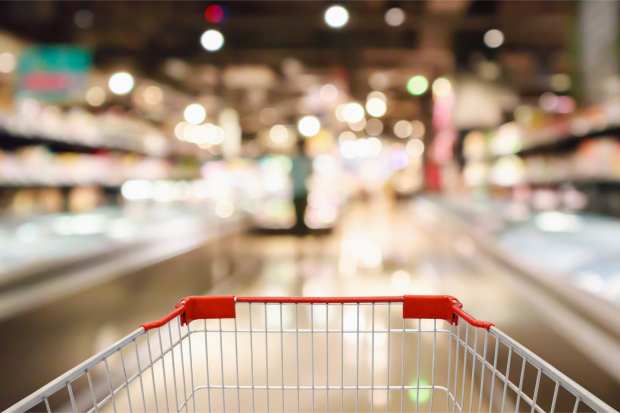Groceries Need To Ban Customers To Protect Workers, Report Says

As grocery store workers fall ill due to irresponsible distancing in stores, experts think it might be time for big chains to go dark and only allow curbside pickup and online ordering.
Experts like union leaders, smaller independent store owners and worker experts think the risk of infection for employees has become too great because of the amount of people coming inside and not following social distancing guidelines.
Some smaller chains have already done this — but the government has not mandated it, and so many large stores get by with posted guidelines and cautionary warnings. The U.S. Labor Department recommended using a drive-through window, and in California, the state’s Department of Industrial Relations said the use of pickup or delivery should be encouraged by companies.
But that doesn’t seem to be working.
Marc Perrone, president of the United Food and Commercial Workers’ union, said around 85 percent of their grocery store worker members reported that people weren’t practicing social distancing in stores. Perrone called careless customers “probably the biggest threat” as the virus continues to infect people.
Mike Houston, general manager of Takoma Park Silver Spring Co-op in Takoma Park, Maryland, made the decision to switch his store to curbside pickup and delivery only in late March.
Houston said his store generally served around 960 people a day in his 4,200-square-foot store, and was unwilling to possibly contribute to more infections as the virus got worse.
Despite the health concerns, the move to only online delivery systems could be problematic, too, according to Seth Harris, former deputy secretary of labor during the Obama administration, who said America’s grocery delivery system has not matured enough to handle such a gigantic shift.
There would be greater numbers of workers required to maintain that system, and the number of requests could overwhelm the mobile apps used to make the requests. Low-income residents could be negatively impacted by the fees delivery apps typically require, and people without internet connection could be inconvenienced, as well.
However, despite the kinks, online grocery delivery and pickup is seeing a spike during the pandemic. PYMNTS’ latest survey of some 8,000 U.S. consumers found that the share of customers buying groceries online has jumped from 4 percent of all grocery buyers on March 6 to 15 percent as of April 11. And of those who ordered groceries online, 61.1 percent either had the food delivered or picked it up curbside.
Click here to read more of our exclusive survey results.
